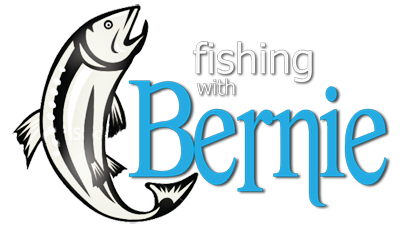Many anglers agonize over finding the hot lure or perfect color pattern for the conditions at hand, but veteran guide Bernie Keefe argues they’d catch more fish by focusing on strike zones instead.
“A strike zone is the area in which fish will respond positively to your presentation, and the size of these areas changes frequently, even during the course of a day on the water,” he explains.
While Keefe concentrates most of his time connecting clients with feisty trout including lakers, browns and ‘bows, along with Kokanee salmon, he’s also a veteran walleye and pike fan, and says the strike zone concept applies to virtually any gamefish.
“Same with technique,” he says. “Strike zones are a big deal whether you’re casting, jigging or trolling.”
According to Keefe, a number of factors can cause a fish’s strike zone to expand or contract. “Weather and light conditions can play a role, as well as the mood of the fish and whether or not its stomach is empty,” he explains.
“Many days,” he continues. “Trout are aggressive and hungry first thing in the morning. They have no trouble swimming 10 to 20 feet to attack something that catches their eye. If I’m trolling, this means I have plenty of leeway positioning my lures in the water column.”
However, as the day progresses and the trout’s bellies become full, their ambition begins to wane, and with it, their willingness to chase down far-off meals.
“It’s not unlike Thanksgiving Day,” Keefe quips. “After dinner, you’re not getting up off the couch to get a turkey sandwich in the kitchen. But, if someone waves a slice of pumpkin pie in front of you, and all you have to do is raise your arm…that’s a whole different story.”
When the strike zone shrinks during a trolling trip, Keefe keeps a close eye on his Lowrance depthfinder to pinpoint trout location, and fine-tunes lure running depths to match until he puts the piscatorial pie in front of the trout’s nose. “I adjust depth in 1-foot increments until I start getting bit again,” he says.
He takes a similar tack when jigging. “Active fish may chase a jig ripped a foot off the bottom,” he says. “But if they want it within six inches of bottom, you’re wasting half of every jig stroke on unproductive water.”
Currently, one of Keefe’s hottest jigging patterns centers on a reduced strike zone. “I rig a 5-inch Berkley Jerk Shad on a half-ounce leadhead, drop it to bottom and then slowly raise and lower it,” he says. “The trick lately has been limiting lifts to 12 inches. Raise it any more than that and the fish won’t bite.”
Even when targeting active trout, it still pays to keep strike zones in mind. “I love casting stickbaits like the Berkley Cutter 110 to hungry brown trout cruising windswept rocky shorelines,” he says.
“The fish are super-aggressive,” he continues. “But that doesn’t mean you can get sloppy. The strike zone typically extends from shore out to the scum line generated by reverse currents bouncing off the bank. Cast outside this area and your success rate drops like an anchor.”
Keefe encourages anglers to consider the strike zone factor at all times, and be prepared to react accordingly. “If you stop catching fish, don’t assume they quit biting or you need a different lure,” he says. “Try focusing your presentation on a smaller area, you might be pleasantly surprised.”

















